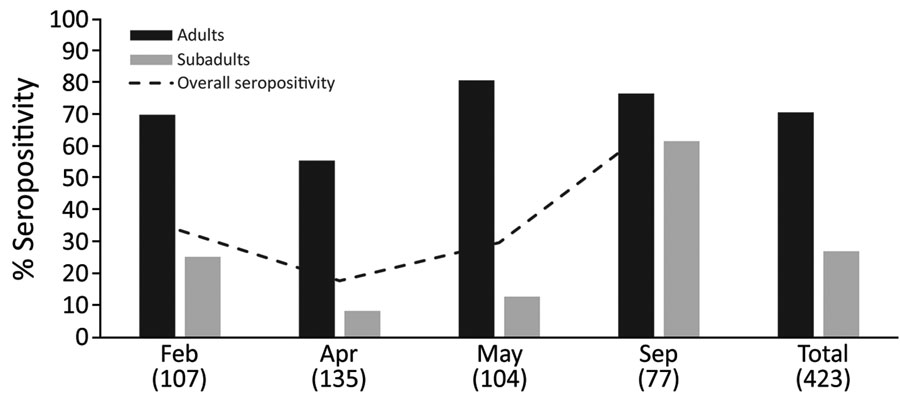Volume 26, Number 12—December 2020
Dispatch
Shedding of Marburg Virus in Naturally Infected Egyptian Rousette Bats, South Africa, 2017
Figure 2

Figure 2. Marburgvirus seropositivity in adult and juvenile Egyptian rousette bats (Rousettus aegyptiacus), Matlapitsi Cave, Limpopo Province, South Africa, February–September 2017. Numbers in parentheses indicate the numbers of bats tested per month. Juvenile bats represent the new generation of bats born mostly during November 2016–January 2017.
Page created: August 12, 2020
Page updated: November 19, 2020
Page reviewed: November 19, 2020
The conclusions, findings, and opinions expressed by authors contributing to this journal do not necessarily reflect the official position of the U.S. Department of Health and Human Services, the Public Health Service, the Centers for Disease Control and Prevention, or the authors' affiliated institutions. Use of trade names is for identification only and does not imply endorsement by any of the groups named above.